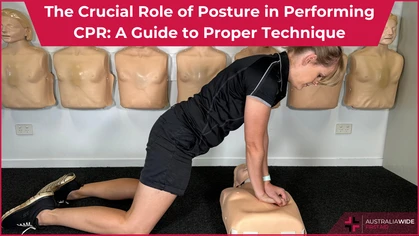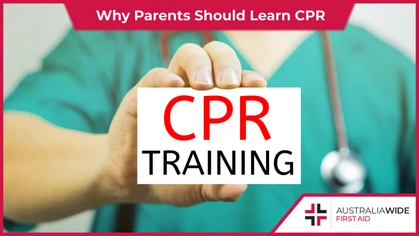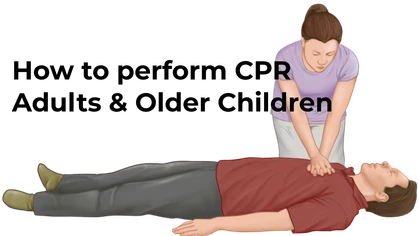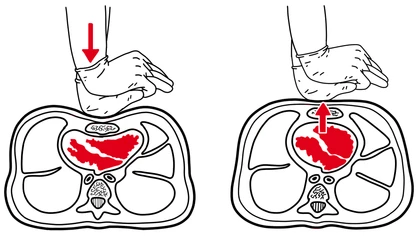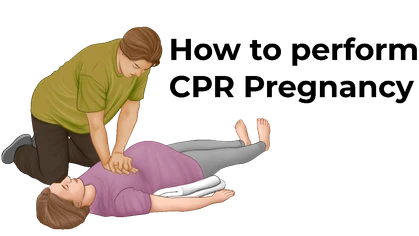Why and When to Use a Defibrillator?

CPR Resources
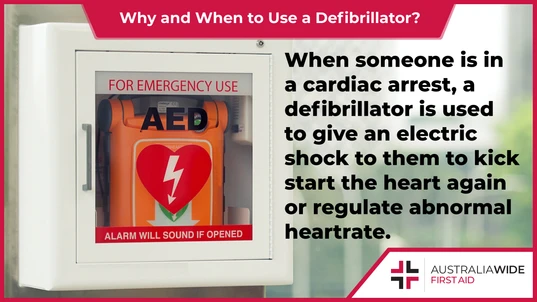
Defibrillators are used in events of cardiac emergencies
When someone is in a cardiac arrest, a defibrillator is used to give an electric shock to them to kick start the heart again or regulate abnormal heartrate. Defibrillators greatly increase the chance for surviving a cardiac arrest. A study by the American Heart Association found that 66% of individuals that experienced a cardiac emergency in public survived after being defibrillated while waiting for emergency responders.Why Use a Defibrillator
A defibrillator is a device that provides a high current of electric shock to restart or restore normal heart rhythm. Because cardiac arrests can potentially be fatal, using this device can help someone survive a sudden cardiac emergency.Types of Defibrillators
There are three types of defibrillators, implantable cardioverter defibrillators, wearable cardioverter defibrillators, and automated external defibrillators.Implantable Cardioverter Defibrillators (ICD)
These defibrillators are small, battery-powered devices that are inserted in the chest of patients and monitored by healthcare professionals. These are used on patients that have previously experienced a heart attack or have arrhythmia. This helps regulate heartrate to prevent a sudden cardiac arrest from occurring.Wearable Cardioverter Defibrillators (WCD)
Like ICD, these defibrillators are worn by individuals who have had a history of heart attacks or arrhythmia. They are also provided and monitored by medical professionals. The main difference is that these defibrillators are not implanted but worn externally. They are also used by patients who are recovering from a heart attack or have recently had a transplant.Automated External Defibrillators (AED)
These defibrillators are machines that are used to provide electric shocks when sudden cardiac arrest occurs. These devices are usually found in public areas and used in case of emergency. Rather than healthcare professionals, these machines are designed to be used by the layperson to restart normal heart rhythm.
When to Use a Defibrillator
A defibrillator is only used when sudden cardiac arrest occurs. Using it in any other health emergencies can cause major complications.Identifying Cardiac Arrest Symptoms
Being able to recognise a sudden cardiac arrest can help decrease the time it takes to use a defibrillator on the individual. If the individual is unconscious, has no pulse, and is not breathing or has difficulty breathing, they may be experiencing a cardiac arrest. Try triggering a response from them by shaking, pinching, or shouting at them. If there is still no response, now would be a good time to perform CPR, use a defibrillator, and call the emergency hotline.How to Perform CPR
While waiting for someone to find you a defibrillator or for medical professionals to arrive, start performing CPR on the individual. CPR provides a temporary assistance to the individual undergoing a cardiac emergency. Here are the steps to providing someone with CPR.- Open the individual’s airway – Lay the individual on their back. Lift their chin up and tilt their head back.
- Chest compressions – Place your hands on top of each other in the middle of the individual’s chest. Push hard and fast, using your body weight to provide 2 inch deep compressions at a rate of 100 beats per minute.
- Rescue breaths – Pinch the individual’s nose shut and place your mouth over their mouth. Blow until their chest rises. Do this twice and then resume chest compressions.
- Repeat – Continue chest compressions and rescue breaths until individual starts breathing again, AED is available, or medical responder can take over.
- Victim is conscious and breathing normally – An AED is only used in an event of a sudden cardiac arrest. If the individual is conscious and breathing normally, it is unlikely they are undergoing a cardiac problem.
- Victim has a “Do Not Resuscitate” sign on them – Take a look at the individual. If they have a tattoo or bracelet that states “Do Not Resuscitate” or “DNR,” do not use an AED and perform CPR on them.
- AED is faulty or has faulty parts – An AED may not be completely functional if it has faulty parts. Because you do not know how a broken device will impact someone going through cardiac arrest, you will need to look for another working AED.
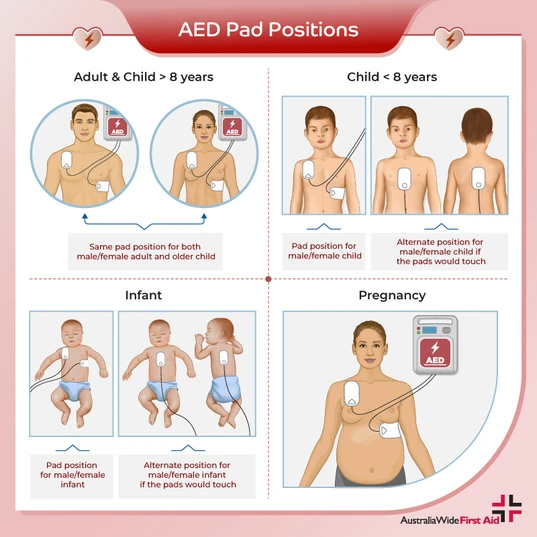
How to Use a Defibrillator
Once you have a defibrillator on hand, you may commence defibrillation. Here are the steps to using a defibrillator:- Turn on defibrillator – Press the green turn on button and follow the instructions written on the defibrillator.
- Apply sticky pads on individual’s skin – One on each side of the individual. The defibrillator should come with an instruction manual on where to apply the pads.
- Let defibrillator monitor patient’s heart rhythm – Do not touch the individual during this time. The defibrillator will let you know whether they will need a shock.
- Follow defibrillator’s instructions – The defibrillator will either tell you that:
- A shock is needed – Press the shock button and stand back. The defibrillator will tell you when to start CPR again and for how long.
- A shock is not needed – The defibrillator will tell you to perform CPR instead and will provide how long it needs to be performed for.
- If the individual is an infant or a child – Make sure to use the pads for children that are also provided in the defibrillator.
- If the individual is wearing a bra or has piercings on their torso – Remove any metals before using an AED on an individual to prevent interference.
- If the individual is covered in sweat or water – Wipe down the individual before applying the sticky pads. Any wet surface prevents the sticky pads from being applied correctly. This may divert shocks from the heart.
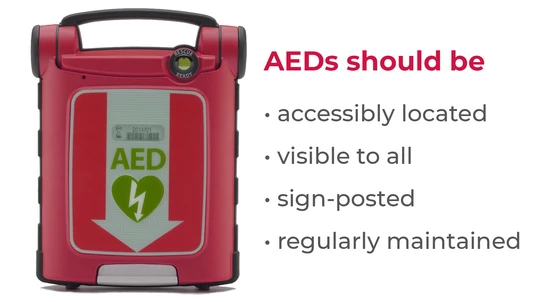
Do We Need More Defibrillators?
A defibrillator must be used as soon as possible when someone is experiencing a cardiac emergency. The longer it takes for a defibrillator to be used lowers chances of surviving a cardiac arrest. While defibrillators are more common in busy, population dense areas, it is more difficult to find them in rural areas. Typically, rural areas have a higher proportion of older people who tend to be more vulnerable to cardiac problems. Having more defibrillators in those areas will significantly reduce cardiac-related deaths. CPR and AED are both important to resuscitating an individual who is experiencing a cardiac arrest. To learn more about proper AED and CPR training, head over to our AED and Cardiac Arrest First Aid articles.
Originally published at
https://www.australiawidefirstaid.com.au/resources/why-and-when-to-use-a-defibrillator
as part of the Australia Wide First Aid Articles Library
